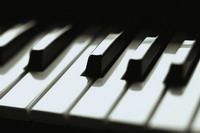Piano Sheets > Billy Rose Sheet Music > It's Only A Paper Moon (ver. 2) Piano Sheet
It's Only A Paper Moon (ver. 2) by Billy Rose - Piano Sheets and Free Sheet Music

About the Song
Other avaliable versions of this music sheet: Version 1 Version 2
"It's Only a Paper Moon" is a popular song. Published in 1933, it was written by Harold Arlen with lyrics by E. Y. Harburg and Billy Rose[1]. It was written originally for an unsuccessful Broadway play called The Great Magoo, set in Coney Island. It was subsequently used in the movie Take a Chance, later in 1933. But its lasting fame stems from a series of recordings of the song by popular artists such as the Paul Whiteman Orchestra, the Nat King Cole Trio, and Ella Fitzgerald, and from its use as a vehicle for improvisation by many jazz musicians. William Billy Rose (September 6, 1899 – February 10, 1966)[1] was an American impresario, theatrical showman and lyricist. He is credited with many famous songs, notably "Me and My Shadow" (1927), "It Happened in Monterey" (1930) and "It's Only a Paper Moon" (1933).[1] Billy Rose was a major force in entertainment, with shows, such as Jumbo.
Download this sheet!
About the Artist

Random article
The essentials of piano sheet music Most people have the notion that sheet music is a very complicated notation and reading it very difficult. However, this is not true as understanding sheet music piano is just a matter of transcribing the various musical notes written.
Uses of sheet music
Piano sheet music is nothing but piano notes written in standard notations. You can avail such free sheet music online from various websites. The main use of sheet music piano is to help aspiring musicians recreate the same sequence of notes as performed by the composer of the piece. It is a method where a specific musical composition is recorded in written form using music notes. The ultimate aim of reading sheet music is to recreate the same score in as accurate a manner as is possible.
(More...)
